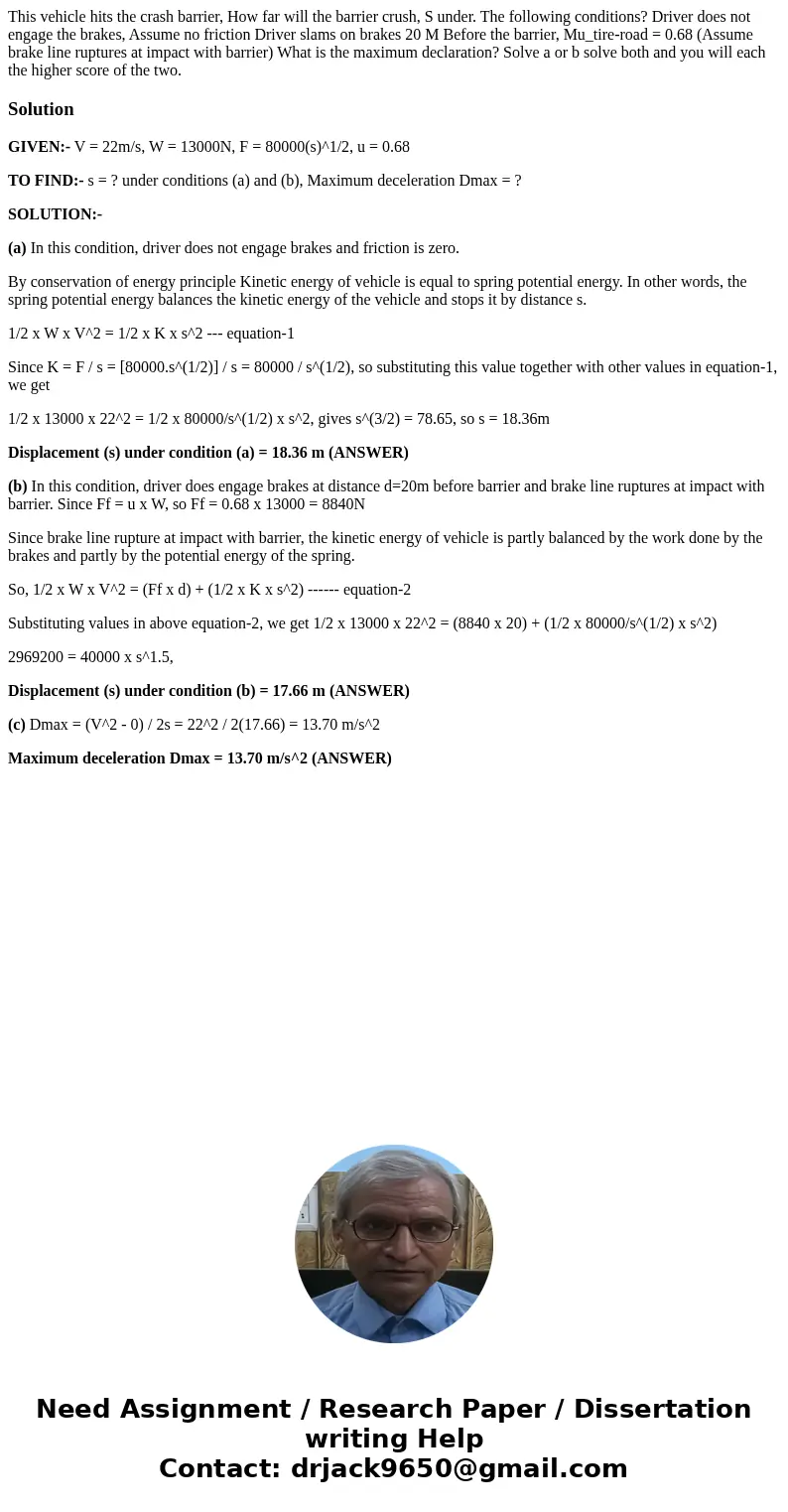This vehicle hits the crash barrier How far will the barrier
Solution
GIVEN:- V = 22m/s, W = 13000N, F = 80000(s)^1/2, u = 0.68
TO FIND:- s = ? under conditions (a) and (b), Maximum deceleration Dmax = ?
SOLUTION:-
(a) In this condition, driver does not engage brakes and friction is zero.
By conservation of energy principle Kinetic energy of vehicle is equal to spring potential energy. In other words, the spring potential energy balances the kinetic energy of the vehicle and stops it by distance s.
1/2 x W x V^2 = 1/2 x K x s^2 --- equation-1
Since K = F / s = [80000.s^(1/2)] / s = 80000 / s^(1/2), so substituting this value together with other values in equation-1, we get
1/2 x 13000 x 22^2 = 1/2 x 80000/s^(1/2) x s^2, gives s^(3/2) = 78.65, so s = 18.36m
Displacement (s) under condition (a) = 18.36 m (ANSWER)
(b) In this condition, driver does engage brakes at distance d=20m before barrier and brake line ruptures at impact with barrier. Since Ff = u x W, so Ff = 0.68 x 13000 = 8840N
Since brake line rupture at impact with barrier, the kinetic energy of vehicle is partly balanced by the work done by the brakes and partly by the potential energy of the spring.
So, 1/2 x W x V^2 = (Ff x d) + (1/2 x K x s^2) ------ equation-2
Substituting values in above equation-2, we get 1/2 x 13000 x 22^2 = (8840 x 20) + (1/2 x 80000/s^(1/2) x s^2)
2969200 = 40000 x s^1.5,
Displacement (s) under condition (b) = 17.66 m (ANSWER)
(c) Dmax = (V^2 - 0) / 2s = 22^2 / 2(17.66) = 13.70 m/s^2
Maximum deceleration Dmax = 13.70 m/s^2 (ANSWER)

 Homework Sourse
Homework Sourse